New Birthing Sim a Hit with Students
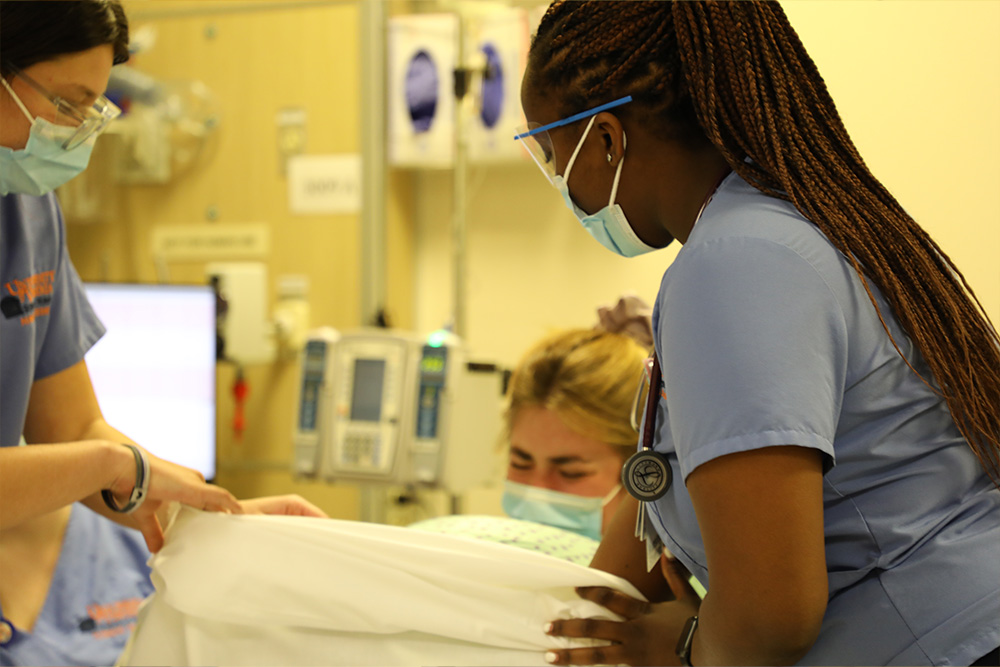
"We're having a baby today!"
So said one of the BSN students taking part in a new kind of obstetrics simulation this week. The new wearable birthing tech—a $65k mechanized belly worn by a standardized patient actor who screamed, pleaded, panted, pushed, and, in one scenario, passed out (due to a simulated hemorrhage)—brought simulation scenarios and OB learning to a whole different level.
Part of a new investment and the brainchild of simulation educators Ryne Ackard, Jennifer Gaines, and Samantha Hudgins, and thanks to support from Dean Marianne Baernholdt, the device—buckled to the torso of the standardized patient actor—includes a cylindrical front-facing metal container into which a surprisingly pliant, lifelike infant (it's a boy!) is nestled in with a bag of pretend blood, then covered up again with a flesh-colored belly skin.

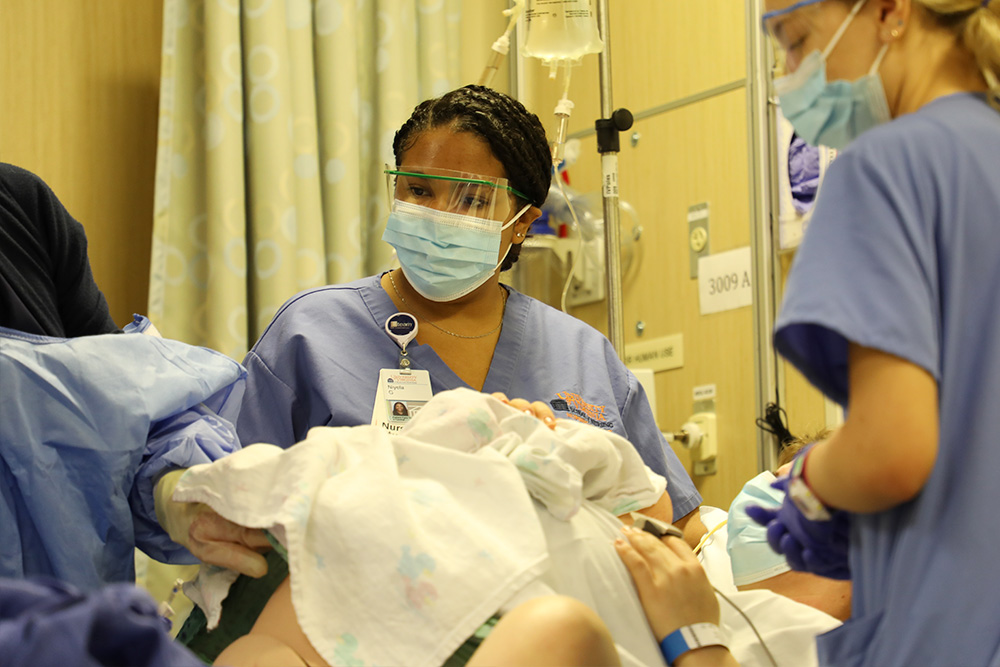
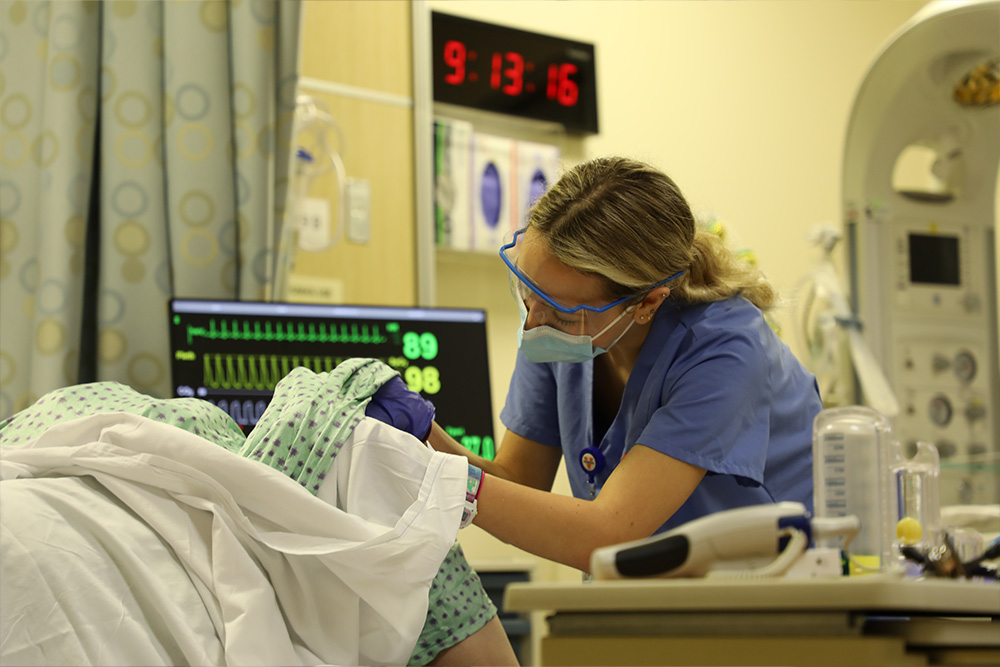
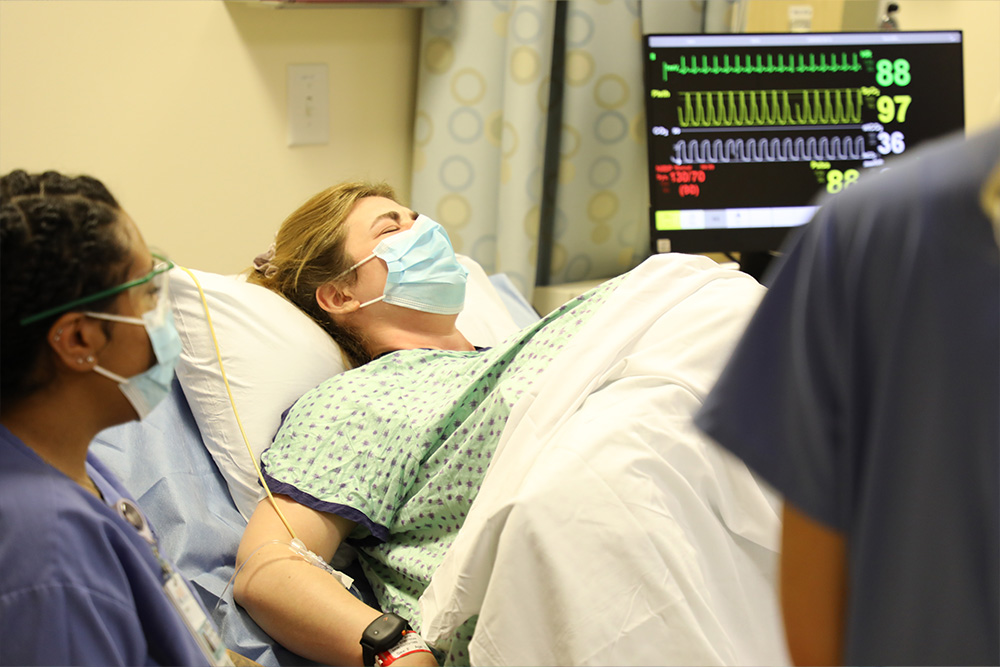
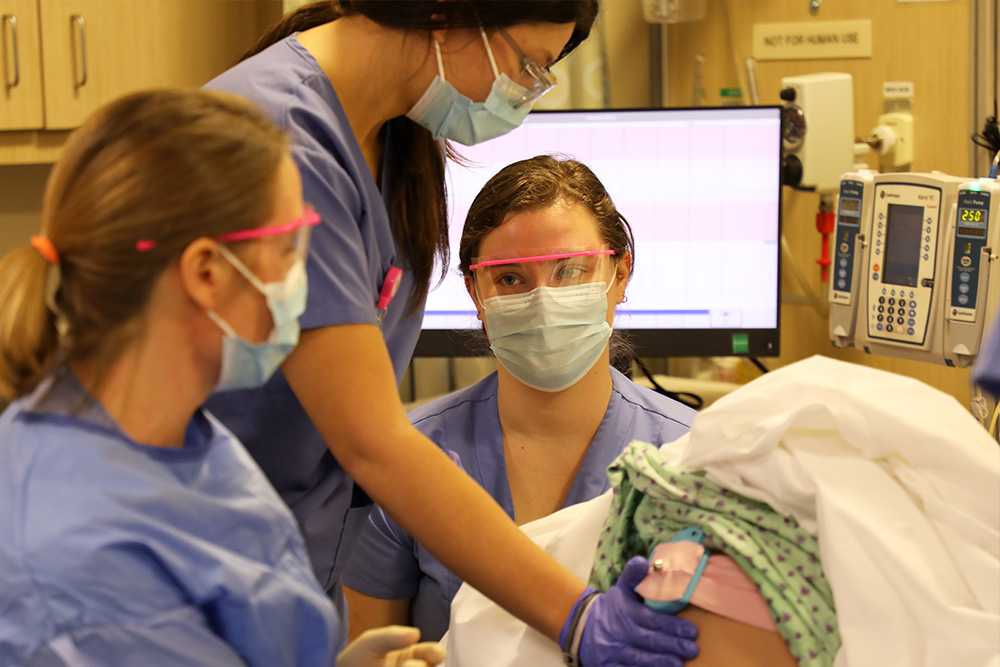
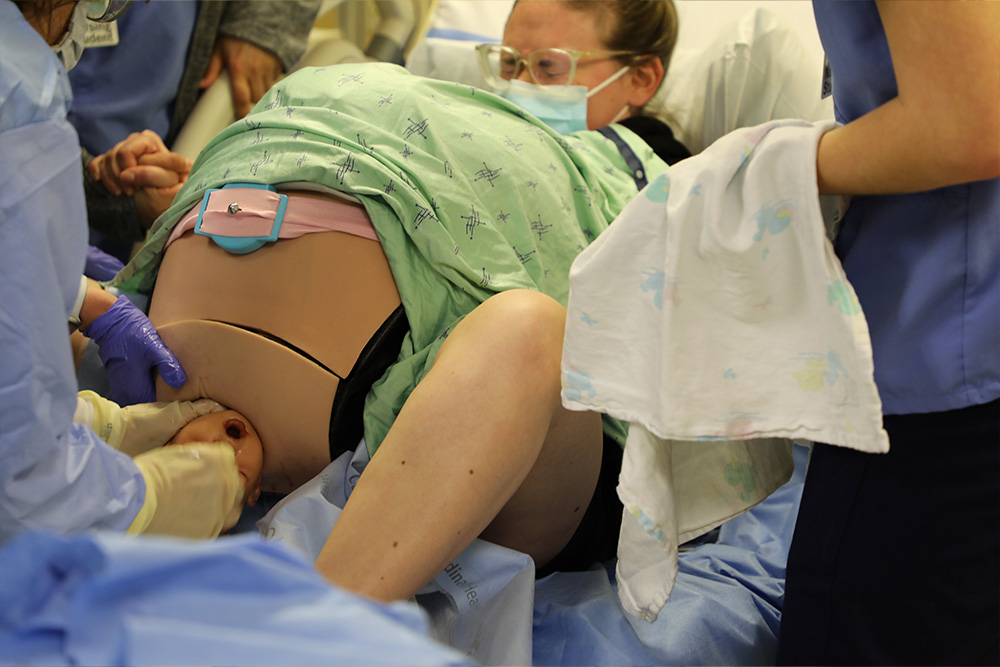
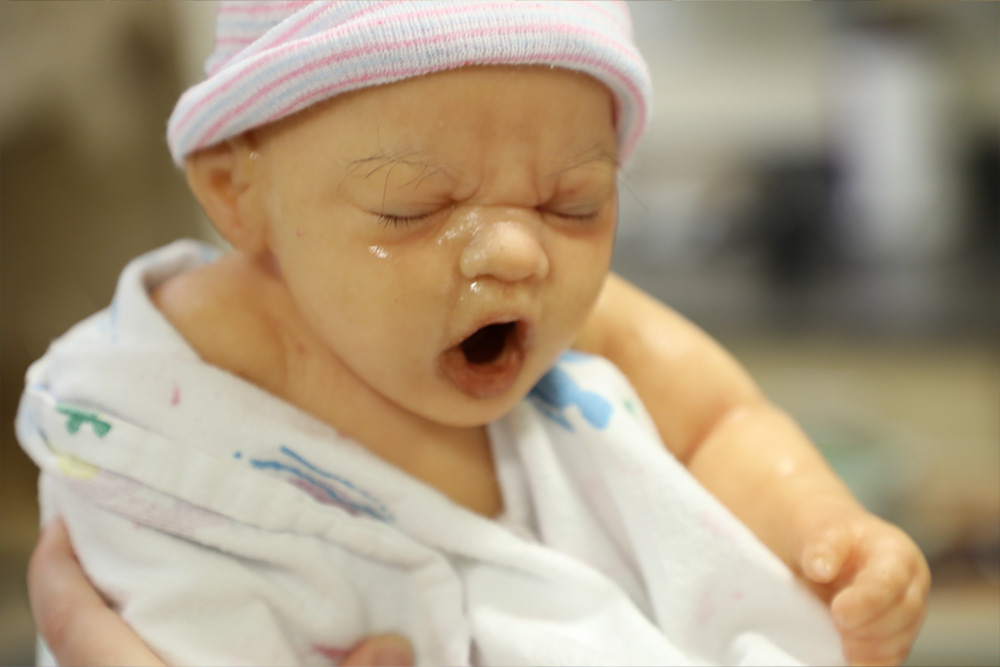

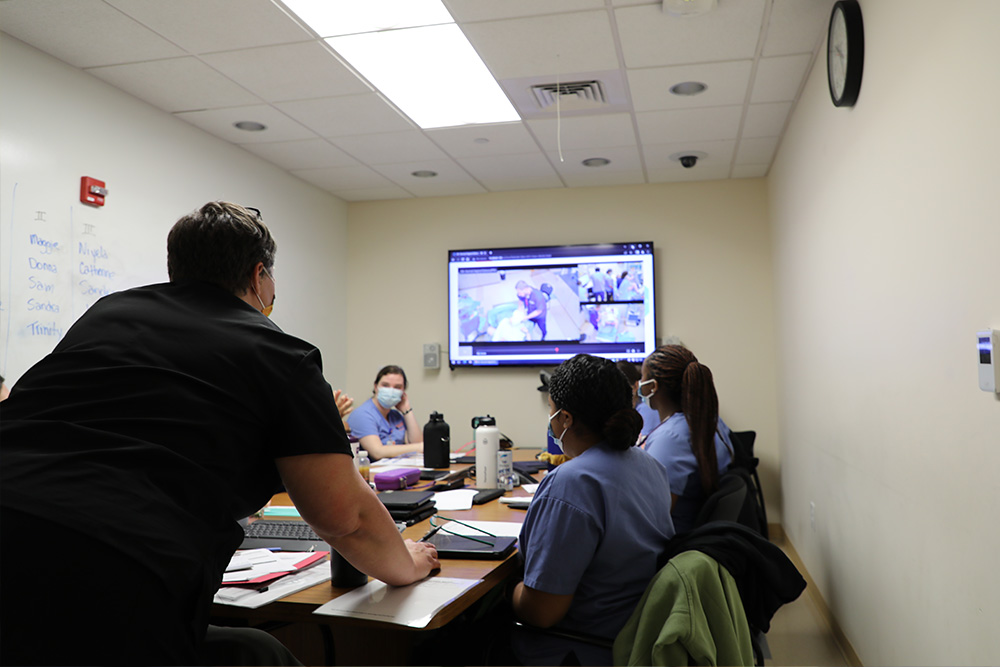
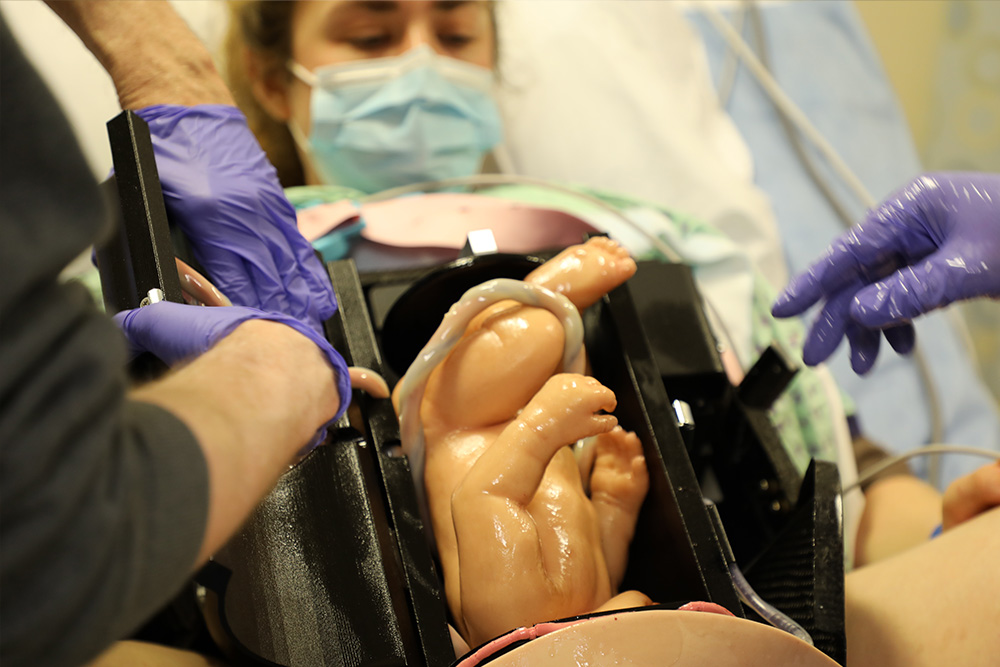
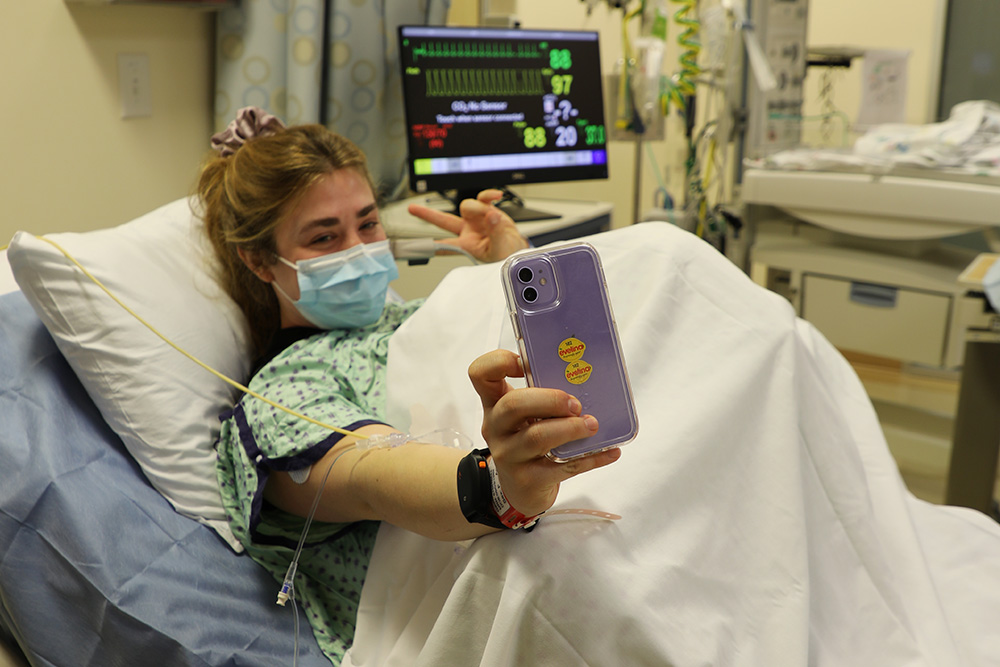
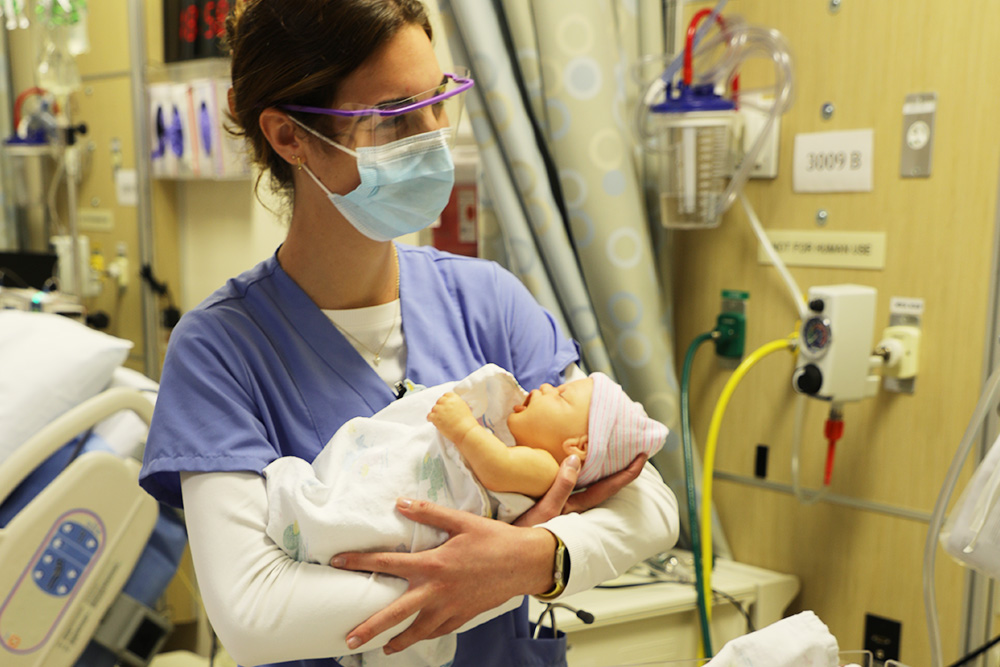
During the scenario, the infant descends into the lower portion of the simulated belly and slowly, laboriously out the simulated birth canal. Shortly after the child emerges, a placenta (which, in some scenarios, is birthed in pieces) makes the experience even more real.
The standardized patient actor wears a smartwatch that vibrates to queue the timing of her acted-out contractions.
Students and faculty say it's a version of birth as close to real as you can get in the sim lab, and dramatically more high fidelity than Noelle, the sim lab's other, entirely mechanized birth mannequin.
###
